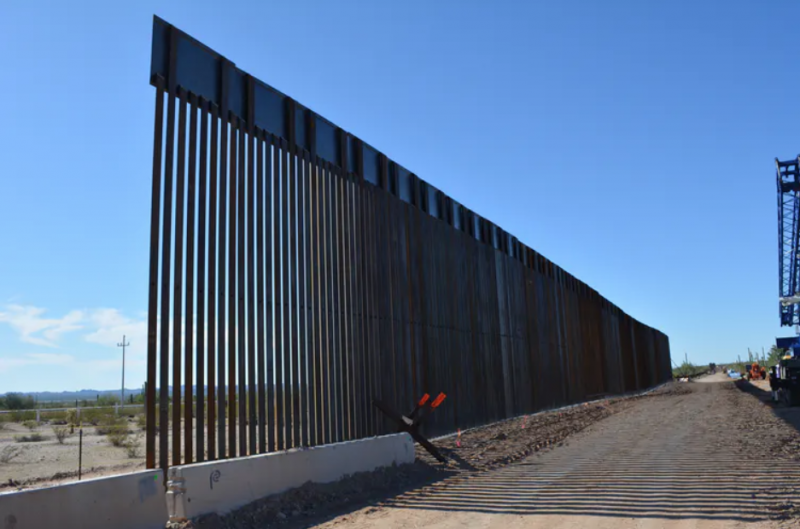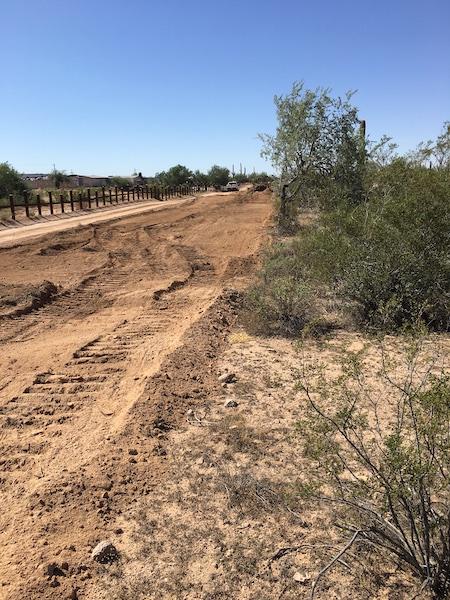
The 9th U.S. Circuit Court of Appeals ruled Friday that the Trump administration unconstitutionally obtained funds to build a 30-foot-tall bollard fence along the U.S.-Mexican border/File photo by Jared Corsi, Colorado State University
The 9th U.S. Circuit Court of Appeals on Friday ruled that the Trump administration unconstitutionally tapped Defense Department funds to build a 30-foot-tall fence along the U.S.-Mexican border, a ruling that likely will lead the administration to ask the U.S. Supreme Court to overturn it.
While the administration earlier this week celebrated the construction of 200 miles of border wall, only about three miles were raised along the border where there was no previous barrier. The other 197 miles involved repairs or replacements of existing barriers.
The celebration might not be long, as the 9th Circuit upheld a lower court ruling saying the administration's efforts to obtain $2.5 billion to build the fence were an unconstitutional appropriation of Congressional authority.
"We conclude that the transfers were not authorized, and that plaintiffs have a cause of action. We affirm the judgment of the district court," Chief Judge Sidney R. Thomas wrote in the 2-1 ruling.
At issue was whether President Trump could transfer money from the Defense Department to build a 30-foot-tall bollard fence without congressional approval. The president did so, citing Section 8005 of the Defense Department's 2019 appropriations act that allows the Defense secretary to move around money in his budget.
While that section allows the secretary to transfer up to $4 billion of funds "for military functions (except military construction)," the 9th Circuit ruling pointed out that Section 8005 also specifies that such transfers can't be made "where the item for which funds are requested has been denied by the Congress.”
"The Executive Branch lacked independent constitutional authority to authorize the transfer of funds. These funds were appropriated for other purposes, and the transfer amounted to “drawing funds from the Treasury without authorization by statute and thus violating the Appropriations Clause,” wrote Judge Thomas.
At the National Parks Conservation Association, Kevin Dahl applauded the ruling, which stemmed from a lawsuit brought by the Sierra Club.
"As a Sierra Club member and longtime visitor of Organ Pipe Cactus National Monument, I am one of the declarants that helped the club achieve standing when that segment of the wall was brought into the lawsuit," said Dahl, the organization's Arizona senior program manager
"This is very good news and confirmation that the construction of the wall at Organ Pipe — which is not only destructive and ineffective — is only being accomplished because the administration illegally used funds Congress appropriated for purposes," he added Friday evening.

Construction of the fence in Organ Pipe Cactus National Monument involved scraping a wide swath along the southern reach of the monument/NPCA, Kevin Dahl file
“Today’s decision is monumental for our border communities and desert wildlands. The appeals court ruled against Trump’s unconstitutional wall construction. We should be protecting communities, our democracy, and the environment, not tearing these things apart as Trump hoped to do,” added Gloria Smith, managing attorney at the Sierra Club. “We rise with border communities to stop this administration from further inflicting its relentless agenda-- harming the people and places we know and love.”
However, damage has been done to Organ Pipe Cactus by the construction activities there. Though rich in biodiversity and a resplendent portrait of the Sonoran Desert, the national monument has been transformed in places into a construction zone, complete with blasting to chew into a hillside to allow for the fence's installation.
“I’ve visited Organ Pipe National Monument’s southern border several times since the wall construction began. I’ve seen a bulldozer scraping the landscape bare, including many of the park’s iconic saguaro cacti, to install a new 30-foot wall to replace an existing barrier," Dahl said back in February. "This expensive and unneeded new wall is destroying the very things our national parks were created to preserve and protect. As this rapid-paced, destructive practice has progressed, such vital resources have faced bulldozers, chainsaws, and now dynamite. There are so many costs with this construction that are being ignored, for so little benefit.”
A National Park Service field survey last summer along 11 miles of the national monument near where the wall was being built identified five archaeological sites, and left the archaeologists of the mind that "significant, presently-unrecorded surface-level and buried archaeological deposits persist across the project (are), and we must assume that all such unrecorded deposits will be destroyed over the course of ensuing border wall construction."
The Sonoran Desert cradled by Organ Pipe Cactus is unlike most other deserts in the world. It receives more rainfall, on average, than other deserts, and is biologically rich, with more than 600 plant species and more than 50 mammalian species. Nearly 300 bird species, and 50 types of amphibian and reptilian species, also have been counted in the monument. Taken as a whole, it’s understandable why the park in 1976 was designated an International Biosphere Reserve.
There’s rich human history here, too, dating back 15,000 years. The Old Salt Trail was used by cultures down through the centuries to bring salt, seashells, and obsidian gathered from Sea of Cortez salt beds at Sonora, Mexico, northward through this landscape. The Tohono O’odham culture relied on the fruit of the saguaros and organ pipe cactus for food.



Add comment